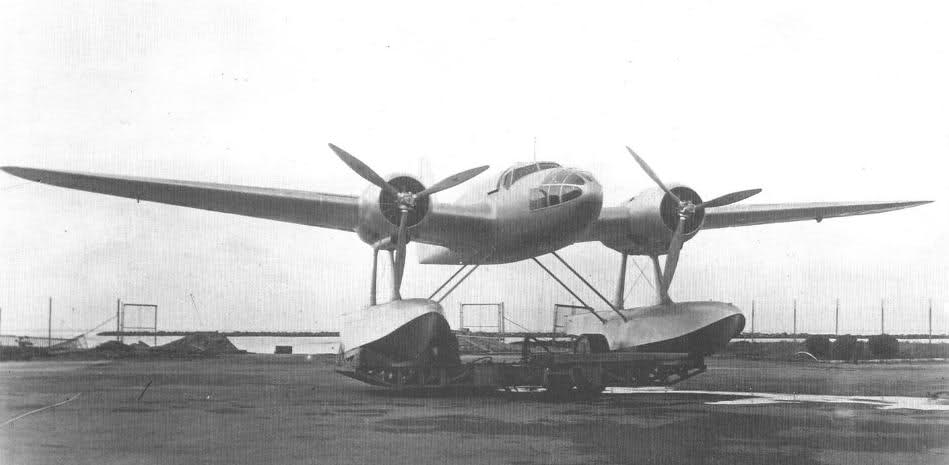Dear SAS'ers and Il-2'ers,
As some of you may know, I have an unusual liking for flying boats and seaplanes. I have always thought there should be more of these types in Il-2 seeing that most of the accurate maps we have are mostly covered in water.
This thread will be a series of requests all about Flying Boats and Seaplanes. Hope you enjoy!
First up is:
Fiat R.S. 14 Maritime Patrol/Reconnaissance Bomber A product of Fiat's Costruzione Meccaniche Aeronautiche SA (CMASA) plant at Marina di Pisa, the R.S. 14 was designed by Ing Stiavelli. It was a handsome twin-engined, low wing monoplane with dual controls and side by side seating for the pilots. Full crew complement was four or five men. Two prototypes, designated R.S.14A, were built and flown for the first time in 1938. Flight trials were so satisfactory that the Ricognizione Marittima immediately placed a production order for the type with only minor modifications, under the designation R.S.14B.
Two long single step floats, mounted on struts directly beneath the engine nacelles, and a generously glazed nose revealed the R.S14's primary role of maritime reconnaissance. That this role was far from being a passive one was demonstrated by the E-type Lanciana dorsal turret, mounting a single 12.7-mm Scotti machine-gun, and by emplacements for 7.7-mm Breda-SAFAT guns in the fuselage sides. A long pannier under the fuselage could accommodate two 350-lb depth charges, or four 220-lb, six 110-lb, or six 88-lb bombs.
Thus armed, the R.S.14 began to be delivered to Italian service units in 1941, and operated in the Sardinian, Aegean, and other Mediterranean theatres during WWII. Its duties included maritime patrol and reconnaissance and convoy escort, and it even performed as a defensive fighter on occasion. A further version, differing only from the omission of the ventral weapons tray, was the R.S.14C, used for air/sea rescue operations. Power plant for all versions was a pair of 840-hp Fiat A.74 RC 38 air-cooled radial engines.
In addition to the prototype, a total of 150 R.S.14's were built by Fiat-CMASA. By September 1943, only a handful of these remained in service; but a few continued to serve on both sides until the war in Europe ended.
SpecificationsSpan: 64ft 1in
Length: 46ft 3in
Height: 12ft 9in
Max Takeoff Weight: 17,637lbs
Max Speed: 242mph
Service Ceiling: 16,400ft
Combat Range: 1,553mi
Pics and Schematics






More to come.
Sincerely,
James